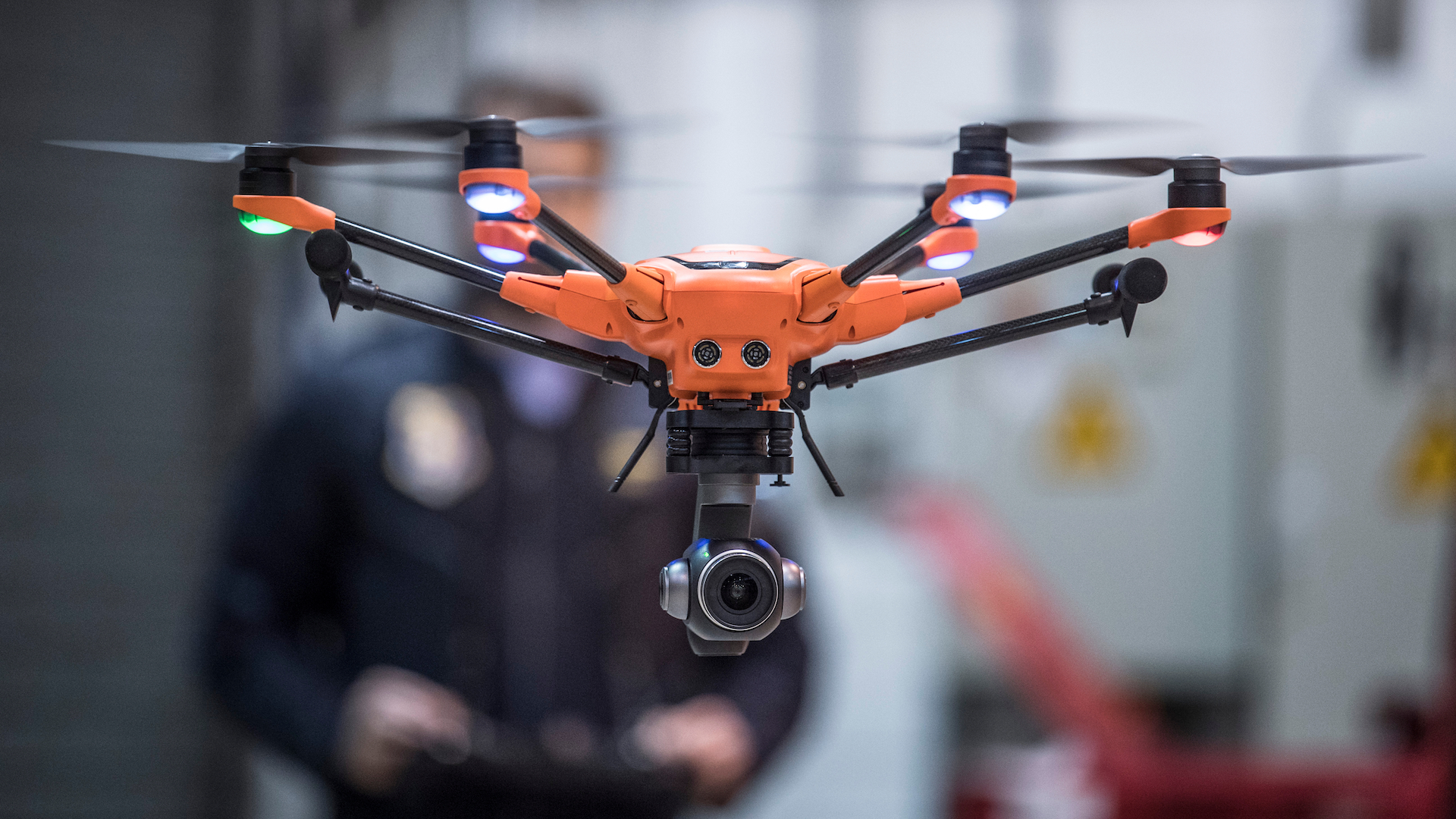

The Georgetown Police Department (GPD) in Kentucky has been using drones to find missing persons, locate stolen vehicles and suspects fleeing from crime scenes, and document infrastructural failures. According to News-Graphic, the primary motivation to purchase the aerial equipment was a sharp rise in vehicle break-ins, and an urge to stay in lockstep with practical technological innovation.
Fortunately, the GPD’s Unmanned Aerial Vehicle Unit didn’t have to foot the bill for Atlanta-based Sky Fire Consulting’s drone on its own, as it was subsidized through funds seized in a drug bust in April of last year. This isn’t your standard hobby drone, either, as the UAV is fitted with numerous cameras that allow for efficient surveillance and functional visibility regardless of when the need arises.
“The unit has a thermal imaging, night vision and an infrared camera system on it that allows it to detect heat and tell temperature differences, and that allows us to see in the dark,” explained Georgetown Police Lt. Phillip Halley. The drone also provides the pilot with a satellite map of his location, which allows for even easier navigation and cooperation with those on the ground. “The Georgetown Police Department has tried to become a leader in new ideas and methods of doing things in terms of technology,” said Halley.
Perhaps most noteworthy, however, is the appeal the mere purchase and successful drone deployments have fostered in other agencies and organizations nearby. When a train derailed off Lisle Road in March of this year, the Norfolk Southern Railway asked the Georgetown Police Department’s UAV Unit for help. The aerial view wasn’t needed to gauge where, specifically, or how the train had come off its tracks, but whether or not the tankers had opened up, and begun leaking hazardous materials into the environment.
“Norfolk Southern asked us to use the drone to look at tanker cars,” said Halley. “They were able to ascertain from the video that no cars with harmful chemicals had ruptured.”
We recently covered the increasingly standardized drone use in crash scene investigations, and this particular derailment was no different. The UAV Unit collected infrared footage of the site at night, regular high-resolution footage during the day, and provided the resulting batch to the Hazzardous Materials Unit for post-incident reconstruction to more clearly understand the sequence of events of this collision.
When you have a hammer, everything looks like a nail. When it comes to drones in law enforcement, however, it really does seem as though nearly every incident taking place outside that requires assistance can be aided in some shape or form through an unmanned camera-drone. When a potential burglar was lurking near the scene of a crime, he was quickly aerially located atop the roof of a former Kroger store. When a missing grandmother, her dog, and grandson got lost in a field last week, all were swiftly located by a drone within 15 minutes.
“We located them well before the battery had exhausted,” said Halley. “She told dispatch she could see the aircraft from her vantage point. It was really exciting when we found them and were pleased to be of assistance and use relatively new technology to help someone.”
Ultimately, the purchase of one camera-drone in the last year has already borne results so fruitful that at least two people and a dog were rescued, suspects were located and investigated, a train derailment was accurately assessed, and the rise in vehicle break-ins was curbed.
Some remaining questions regarding drone usage in law enforcement are how many units are too many for one department, and whether or not the standardized use encroaches on citizens’ privacy rights and civil liberties and by contrast to the overall welfare of the city. In those terms, the industry at large, and federal, state and local governments, are continuing to debate that issue, with a hopeful middle ground ascertained sooner rather than later.